Geophysics
Type of resources
Available actions
Topics
Keywords
Contact for the resource
Provided by
Years
Formats
Representation types
Update frequencies
Service types
Scale
Resolution
-

The Geophysical Properties dataset consists of density, velocity, magnetic susceptibility and thermal conductivity values, with related source, location and geology data. The data have been collected on a project basis, therefore the quality and completeness of the database coding is variable. The data is currently from the UK and Ireland although this may be extended. The data consists of samples with related data values - (1,000s), Density Values - Laboratory Measurements - (1,000s); Velocity Values - Laboratory Measurements - (1,000's), Magnetic Susceptibility Values - Laboratory Measurements - (1,000s); Magnetic Susceptibility Values - Field Measurements - (10,000s measurements on 1,000s samples). Borehole information for data obtained as Downhole profiles with related data values; British Rock Densities Project - Insitu density values obtained from the analysis of formation density logs - (10s boreholes with 100s values). Downhole Magnetic Susceptibility - Obtained for a confidential project with some offshore - (10s boreholes with 10,000s samples) . Thermal Conductivity - (100s boreholes with 1,000s samples), Mean Data Values derived from a data source such as published literature for a site or rock formation; Density - (100s), Magnetic Susceptibility - (100s). Information about the source from which data is obtained, Engineering Geology Laboratory Reports - (100s), Literature which may be published or unpublished - (100s). The database is not maintained and no new data has been added since 2004.
-
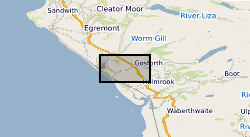
A collection of reference drawings relating to investigations carried out by Nirex, during the period from 1989 to 1997. The drawings summarise the status of the geological investigation at Sellafield and include borehole locations, geology (surface, structure, sections etc) and geophysics (seismic, airborne, etc). Sites near Sellafield, in Cumbria, and Dounreay, in Caithness. The Nirex (Nuclear Industry Radioactive Waste Executive) geological archive was transferred to the British Geological Survey during 2000/2001. The BGS has undertaken to retain the records for a minimum of 50 years as part of its national geological archive. The ownership of Nirex was transferred from the nuclear industry to the UK Government departments DEFRA and DTI in April 2005, and then to the UK's Nuclear Decommissioning Authority (NDA) in November 2006.
-
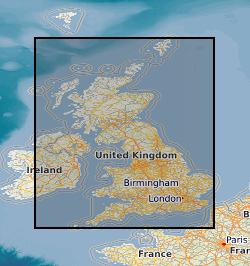
The UK Onshore Geophysical Library was established in 1994 in conjunction with the Department of Trade and Industry (DTI) and the UK Onshore Operators Group (UKOOG). The Library manages the archive and official release of seismic data recorded over landward areas of the UK. By agreement with the DTI and HMSO, the Library operates as a registered charity, funded by revenues raised from data sales and donations, with the long term objective of bringing all available UK onshore digital seismic data into secure archival storage, whilst providing efficient access to all interested parties. BGS has access to the data at cost of copying only for science budget work. Data index on the BGS Geoscience Data Index.
-

A list of the laboratory reports produced from testing in the engineering geology laboratory. It includes report number, title and author's name(s). The reports themselves contain data on a wide range of geotechnical and geophysical laboratory tests, from standard and index tests to complex research. Test materials are highly varied, soils and rock, from the UK or overseas.
-

GeoIndex Historical Surveys This aeromagnetic survey was carried out by Canadian Aeroservices on behalf of the Northern Ireland Government in 1959 as part of a UK wide survey.
-
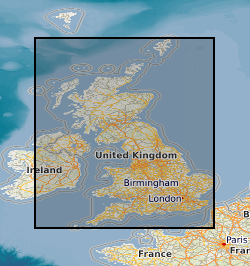
The Seismic Locations and Sections database (LOCSEC) stores digitised seismic reflection survey location and line-interpretation data. Supplementary data stored includes map projection information and rock-unit seismic velocity data. The data are grouped by interpretation project area. Location data are input from digitised seismic shotpoint (SP) or common depth point (CDP) maps, or from direct input of digital navigation data. [See: Original Seismic Shotpoint Location Maps (ORIGSPMAPS) and Digital Seismic Shotpoint Location Maps (DIGSPMAPS) datasets]. Line-interpretation data are input from digitised pick-lines on manually interpreted printed seismic sections. [See: Copy Seismic Sections dataset (COPYSEISECS)]. In-house software is used for data management and display, to perform interpretation related tasks, e.g. depth-conversion, and to merge data into X, Y, Z form for input to 3D mapping and modelling packages such as EarthVision. Data in LOCSEC may also be related to the borehole interpretations held in the Stratigraphic Surfaces Database (SSD). Almost all data are within the UK Onshore area; although there are some UK near-shore and offshore (North Sea, Irish Sea) and foreign data. Most data were acquired for commercial hydrocarbon exploration and subsequently provided to BGS for use on specific projects. Some data were acquired by BGS and other public-sector bodies, e.g. BIRPS, for academic research.
-

This document data set contains paper copies of many of the seismic reflection survey sections from the original seismic sections data set (ORIGSEISECS) . These have been made for interpretation. Most data are within the UK onshore area; although there are some UK near-shore and offshore (North Sea, Irish Sea) and foreign data. Most data were acquired for commercial hydrocarbon exploration and subsequently provided to BGS for use on specific projects. Some data were acquired by BGS and other public-sector bodies, e.g. BIRPS (British Institutes Reflection Profiling Syndicate ), for academic research. The documents are dyeline prints or plain-paper photocopies. They are stored folded in boxes, approx 40 sections per box, approx 530 boxes. There are a lot of duplicates, there being an interpreted and uninterpreted copy of many profiles. Mostly concentrated in areas prospective for coal, oil and gas.
-
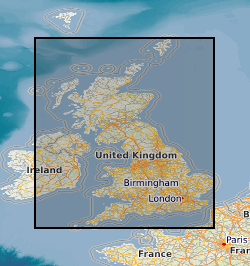
This database stores down-hole stratigraphic data to complement the seismic surface picks stored in the Seismic Locations And Sections Database (LOCSEC). Because these surfaces are chosen for their visibility on seismic data, they may not be directly equivalent to established BGS lithostratigraphic and/or choronstratigraphic divisions. However, the local coding system is based on and can relate to the BGS stratigraphic LEXICON. Stratigraphic picks are stored in terms of depth and seismic one-way travel time. Local borehole summary information (location, elevation, etc.) is used because both onshore and offshore boreholes are stored in this database. These data can be related to the BGS onshore borehole database by borehole registration, and to the offshore well database by DTI well-id. Additional tables (under development) provide information on hydrocarbon tests and their results. Almost all data are within the UK Onshore area; although there are some UK near-shore and offshore (North Sea, Irish Sea).
-

Values of the geomagnetic field vector components computed from measurements made on land, at sea and in the air since 1900 all round the world. Repeat station data (collected at one location over many years and reduced to a magnetically quiet level) are an important part of this dataset. These data are useful for charting the Earth's magnetic field on time scales of years to decades.
-
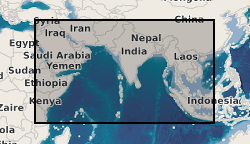
Data from geophysical surveys carried out by the British Geological Survey in many countries in the Middle East, the Indian sub-continent and Indo-China for different agencies. The surveys range from regional gravity and airborne magnetic mapping to targetted surveys for mineral and water. Individual surveys do not yet have metadata entries: this entry describes a notional database that represents all geophysical surveys carried out within the region.
 NERC Data Catalogue Service
NERC Data Catalogue Service